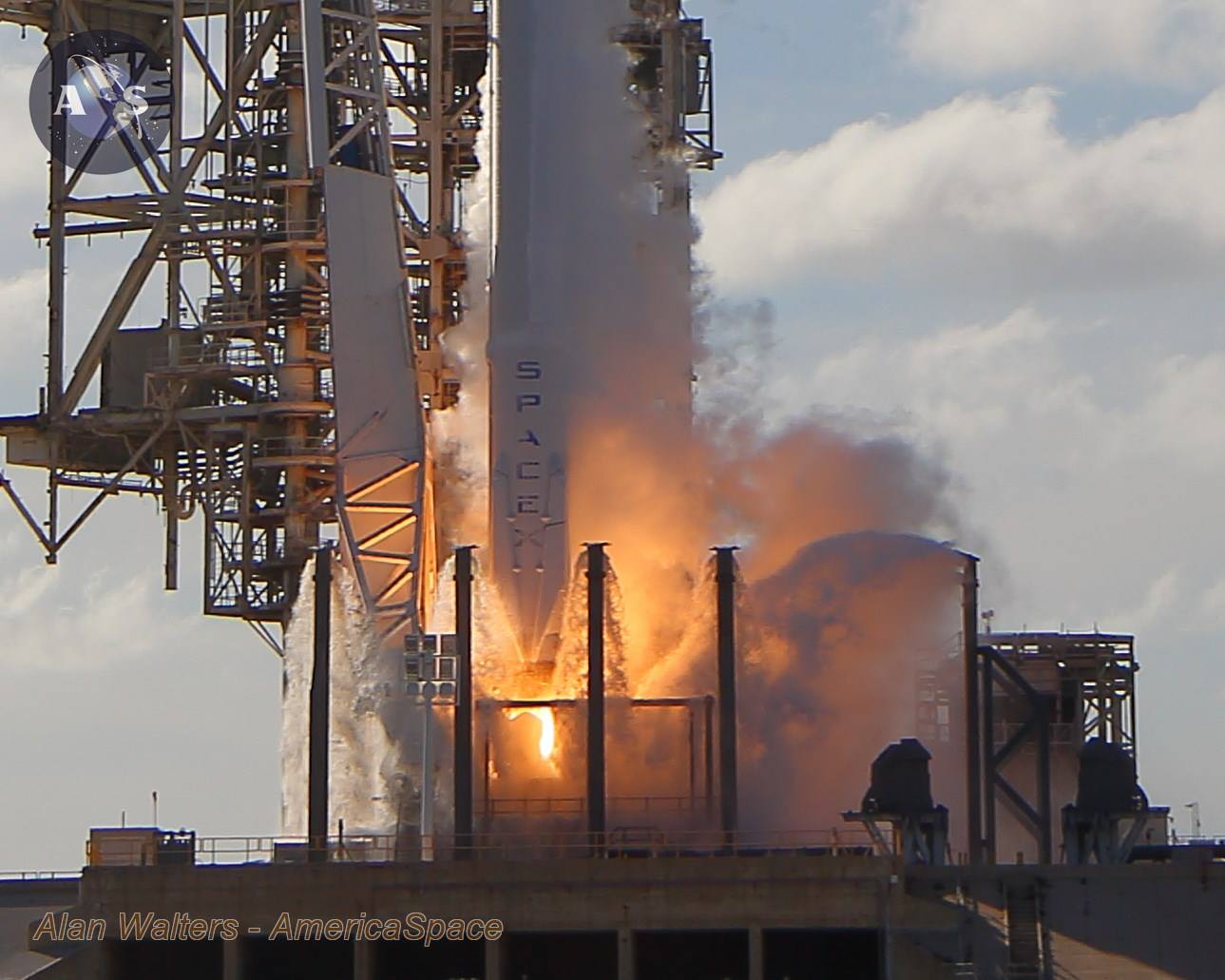
SpaceX’s gigantic Falcon Heavy will launch the initial elements of the Gateway towards lunar orbit no sooner than May 2024 to kick off a prolonged phase of robotic and human exploration of our closest celestial neighbor.
The triple-barreled rocket—which first flew amid great fanfare three years ago, this week—will rise from historic Pad 39A at the Kennedy Space Center (KSC) in Florida to deliver the integrated components of the Power and Propulsion Element (PPE) and the Habitation and Logistics Outpost (HALO) into a polar Near-Rectilinear Halo Orbit (NRHO) around the Moon. The total launch contract amounts to $331.8 million.
The contract award, announced Tuesday, marks another forward step for the Gateway, only days after the newly-inaugurated Biden Administration signaled its support for the Artemis Program and its goal to return humans to lunar distance and plant boots on the surface of the Moon for the first time since Apollo 17, almost a half-century ago.
Delivery of the PPE/HALO “stack” is expected to mark one of the earliest uses of the NRHO, which envisages a seven-day orbital period around the Moon, in which the Gateway will approach the lunar north pole as closely as 1,900 miles (3,000 km) at “perilune” and travel as far as 43,000 miles (70,000 km) over the lunar south pole at “apolune”.

Later this year, NASA’s Cislunar Autonomous Positioning System Technology Operations and Navigation Experiment (CAPSTONE) orbiter will launch atop Rocket Lab’s Electron booster from the Mid-Atlantic Regional Spaceport (MARS) on Wallops Island, Va., to conduct the first demonstration of the stability characteristics of this never-before-tried orbit.
The conceptual development of the Gateway—a complex about one-sixth as large as the International Space Station (ISS)—has been in the works for several years, its nomenclature subtly changed on several occasions: initially known as the Deep Space Habitat (DSH), then the Deep Space Gateway (DSG), then the Lunar Orbital Platform-Gateway (LOP-G), it today answers simply to the name “Gateway”.
In addition to serving as a staging-point for a sustained human presence on the surface of the Moon, the complex will support a multitude of investigations in planetary science, astrophysics, Earth observations, heliophysics, fundamental biology and human health and performance.
And the 4,400-cubic-foot (125-cubic-meter) Gateway boasts a strong international flavor, with Canada having committed to build its robotic assets, Japan contributing to its Environmental Control and Life Support System (ECLSS), batteries, thermal control and imaging systems and the European Space Agency (ESA) providing habitation, refueling and communications capabilities.

Two years ago, in May 2019, NASA selected Maxar Technologies—formerly Space Systems/Loral (SS/L)—to build the Gateway’s initial structural component, the Power and Propulsion Element (PPE), which then-Administrator Jim Bridenstine called “the cornerstone” of the effort to create a sustainable and reusable human presence “on and around the Moon”.
The 19,000-pound (8,600 kg) PPE is equipped with communications and maneuvering capabilities, together with high-powered, 50-kilowatt Solar Electric Propulsion (SEP) functionalities.

Last June, NASA announced that the PPE would be pre-integrated and flown together with the Habitation and Logistics Outpost (HALO) atop a commercial booster, with launch moving from 2022 to no earlier than November 2023. This was expected to save NASA the expense of two rocket launches, as well as reducing the risks of sending a pair of spacecraft under their own steam to NRHO distance, then autonomously docking them together.
At around the same time last summer, Northrop Grumman Corp. was contracted to develop the HALO module through its Preliminary Design Review (PDR) phase. The module will carry radial docking ports, Body-Mounted Radiators (BMRs), batteries and communication hardware and affords early Artemis crews a functional pressurized volume capable of sustaining four people in NRHO for up to a month.

Northrop Grumman announced the successful conclusion of the PDR last November, with HALO expected to leverage mature Cygnus spacecraft technology in its design. Following the completion of the PDR, a multi-element critical design assessment and Systems Critical Design Review are anticipated this year.
The selection of SpaceX to launch the combined PPE/HALO “stack” is expected to mark the Falcon Heavy’s ninth confirmed mission. Capable of lifting up to 140,660 pounds (63,800 kg) to low-Earth orbit, around 58,860 pounds (26,700 kg) to Geostationary Transfer Orbit (GTO) and 37,040 pounds (16,800 kg) to Mars, the Heavy is one of a small group of launch vehicles—which also include the as-yet-unflown United Launch Alliance (ULA) Vulcan-Centaur and Europe’s Ariane 6—with the capability to deliver heavyweight Gateway hardware to the Moon.

First flown back in February 2018, in which it delivered SpaceX founder Elon Musk’s cherry-red Tesla Roadster onto a Mars-crossing trajectory, the Falcon Heavy launched twice more in April and June of the following year.
On its second mission, it boosted the Arabsat-6A communications satellite on the first leg of its journey up to Geostationary Orbit, whilst on its third—the first Falcon Heavy to fly in the hours of darkness—it delivered a payload for the U.S. Air Force’s Space Test Program (STP).
Following a launchless 2020, the Heavy is expected to return to service with perhaps three missions this year: a pair of classified cargoes for the U.S. Space Force and the large ViaSat-3-class communications satellite. Another Space Force flight is targeted for late 2023. And in July 2022, it will deliver NASA’s Psyche orbiter to a metal-rich asteroid of the same name, which sits between the orbits of Mars and Jupiter.





